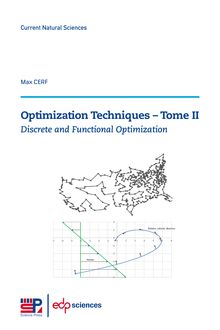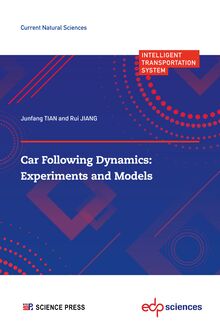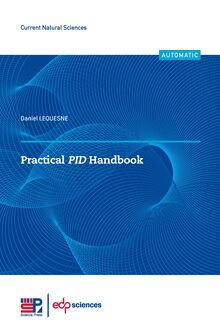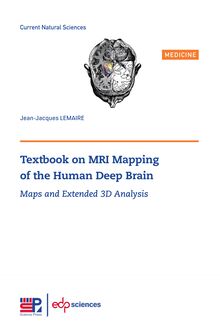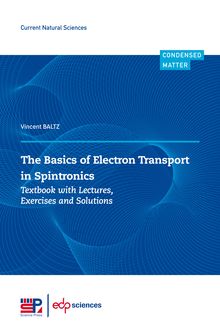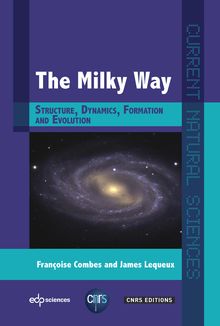-
 Univers
Univers
-
 Ebooks
Ebooks
-
 Livres audio
Livres audio
-
 Presse
Presse
-
 Podcasts
Podcasts
-
 BD
BD
-
 Documents
Documents
-
- Cours
- Révisions
- Ressources pédagogiques
- Sciences de l’éducation
- Manuels scolaires
- Langues
- Travaux de classe
- Annales de BEP
- Etudes supérieures
- Maternelle et primaire
- Fiches de lecture
- Orientation scolaire
- Méthodologie
- Corrigés de devoir
- Annales d’examens et concours
- Annales du bac
- Annales du brevet
- Rapports de stage
La lecture à portée de main
Découvre YouScribe en t'inscrivant gratuitement
Je m'inscrisAn Introduction to Linear Algebra , livre ebook
Découvre YouScribe en t'inscrivant gratuitement
Je m'inscrisEn savoir plus
En savoir plus

Description
Linear algebra is a core course for science and engineering students in colleges and universities. It is one of the foundations of modern mathematics and has extensive and profound applications in physics, computer science, engineering, economics, etc. This book aims to help readers acquire the basic knowledge of linear algebra and lay the ground for further study of mathematics courses. It is intended for first-year undergraduate students in engineering, science, and other areas related to mathematics. It is also suitable for self-study. This book is organized into eight chapters and the main contents include linear equations, basic operations of matrices, determinants, vector spaces, eigenvalues and eigenvectors, linear transformations, etc. In the eighth and last chapter, the authors draw on key concepts presented in the previous chapters in the book to give an elementary proof of the recently proposed Böttcher-Wenzel conjecture. In addition, the appendix provides a preliminary discussion of the independence of the axioms of vector spaces. The book provides simple exercises for tutorials and more challenging exercises for student practice.
Chapter 1Linear Systems and Matrices . . . . . . . . . . . . . . . . . . . . . . . . . .. . . . . . . . 1
1.1Introduction to Linear Systems and Matrices. . . . . . . . . . . . . . . . . .. . . . . . . . . .1
1.1.1Linear equations and linear systems . . . . . . . . . . . . . . . . . . . . . .. . . . . . . . . . . . 1
1.1.2Matrices . . . . . . . . . . . . . . . . . . . . . . . . . . . . . . . . . . .. . . . . . . . . . . . . . . . . . . . . . . . 3
1.1.3Elementary row operations . . . . . . . . . . . . . . . . . . . . . . . . . . .. . . . . . . . . . . . . . . 4
1.2Gauss-Jordan Elimination. . . . . . . . . . . . . . . . . . . . . . . . . . . .. . . . . . . . . . . . . . . . . . .5
1.2.1Reduced row-echelon form. . . . . . . . . . . . . . . . . . . . . . . . . . . .. . . . . . . . . . . . . . .5
1.2.2Gauss-Jordan elimination . . . . . . . . . . . . . . . . . . . . . . . . . . .. . . . . . . . . . . . . . . . 6
1.2.3Homogeneous linear systems . . . . . . . . . . . . . . . . . . . . . . . . . .. . . . . . . . . . . . . . .9
1.3 Matrix Operations. . . . . . . . . . . . . . . . . . . . . . . . . . . . . . . . . . .. . . . . . . . . . . . . . . . . . 11
1.3.1Operations on matrices . . . . . . . . . . . . . . . . . . . . . . . . . . . .. . . . . . . . . . . . . . . . 11
1.3.2 Partition of matrices . . . . . . . . . . . . . . . . . . . . . . . . . . . . . . . . . .. . . . . . . . . . . . .13
1.3.3Matrix product by columns and by rows . . . . . . . . . . . . . . . . . . . . .. . . . . . . 13
1.3.4Matrix product of partitioned matrices . . . . . . . . . . . . . . . . . . . .. . . . . . . . . . 14
1.3.5Matrix form of a linear system . . . . . . . . . . . . . . . . . . . . . . . .. . . . . . . . . . . . . 15
1.3.6Transpose and trace of a matrix . . . . . . . . . . . . . . . . . . . . . . . .. . . . . . . . . . . . 16
1.4 Rules of Matrix Operations and Inverses . . . . . . . . . . . . . . . . . . . . . . .. . . . . . . . 18
1.4.1 Basic properties of matrix operations . . . . . . . . . . . . . . . . . . . . . . . .. . . . . . . 19
1.4.2Identity matrix and zero matrix . . . . . . . . . . . . . . . . . . . . . . . .. . . . . . . . . . . . 20
1.4.3Inverse of a matrix . . . . . . . . . . . . . . . . . . . . . . . . . . . . . .. . . . . . . . . . . . . . . . . . 21
1.4.4Powers of a matrix . . . . . . . . . . . . . . . . . . . . . . . . . . . . . .. . . . . . . . . . . . . . . . . . 23
1.5Elementary Matrices and a Method for Finding A−1 . . . . . . . . . . . . . . .. . . . 24
1.5.1Elementary matrices and their properties . . . . . . . . . . . . . . . . . . .. . . . . . . . .24
1.5.2 Main theorem of invertibility . . . . . . . . . . . . . . . . . . . . . . . . . . .. . . . . . . . . . . . 26
1.5.3 A method for finding A−1 . . . . . . . . . . . . . . . . . . . . . . . . . . . .. . . . . . . . . . . . . .27
1.6 FurtherResults on Systems and Invertibility . . . . . . . . . . . . . . . . . . . . .. . . . . . 28
1.6.1 A basic theorem. . . . . . . . . . . . . . . . . . . . . . . . . . . . . . . . .. . . . . . . . . . . . . . . . . .28
1.6.2Properties of invertible matrices . . . . . . . . . . . . . . . . . . . . . . .. . . . . . . . . . . . . 29
1.7 Some Special Matrices . . . . . . . . . . . . . . . . . . . . . . . . . . . . . . .. . . . . . . . . . . . . . . . . . 31
1.7.1 Diagonal and triangular matrices . . . . . . . . . . .. . . . . . . . . . . . . . . . . . . . . . . . 32
1.7.2 Symmetric matrix . . . . . . . . . . . . . . . . . . .. . . . . . . . . . . . . . . . . . . . . . . . . . . . . . 34
Exercises. . . . . . . . . . . . . . . . . . . . . . . . . .. . . . . . . . . . . . . . . . . . . . . . . . . . . . . . . . . . . . . . . .. .35
Chapter 2 Determinants. . . . . . . . . . . . . . . . . . .. . . . . . . . . . . . . . . . . . . . . . . . . . . . . . . .42
2.1Determinant Function . . . . . . . . . . . . . . . . . . . . . . . . . . . . .. . . . . . . . . . . . . . . . . . . . 42
2.1.1Permutation, inversion, and elementary product . . . . . . . . . . . . . . . .. . . . . 42
2.1.2Definition of determinant function . . . . . . . . . . . . . . . . . . . . . .. . . . . . . . . . . . 44
2.2Evaluation of Determinants. . . . . . . . . . . . . . . . . . . . . . . . . . .. . . . . . . . . . . . . . . . . 44
2.2.1Elementary theorems . . . . . . . . . . . . . . . . . . . . . . . . . . . . . .. . . . . . . . . . . . . . . . 44
2.2.2 A method for evaluating determinants . . . . . . . . . . . . . . . . . . . . . .. . . . . . . . 46
2.3Properties of Determinants . . . . . . . . . . . . . . . . . . . . . . . . . .. . . . . . . . . . . . . . . . . . 46
2.3.1 Basic properties . . . . . . . . . . . . . . . . . . . . . . . . . . . . . . . . . .. . . . . . . . . . . . . . . . . 47
2.3.2Determinant of a matrix product . . . . . . . . . . . . . . . . . . . . . . . .. . . . . . . . . . . 48
2.3.3Summary . . . . . . . . . . . . . . . . . . . . . . . . . . . . . . . . . . . .. . . . . . . . . . . . . . . . . . . . . 50
2.4Cofactor Expansions and Cramer’s Rule . . . . . . . . . . . . . . . . . . . . .. . . . . . . . . . 51
2.4.1Cofactors . . . . . . . . . . . . . . . . . . . . . . . . . . . . . . . . . . .. . . . . . . . . . . . . . . . . . . . . . 51
2.4.2Cofactor expansions . . . . . . . . . . . . . . . . . . . . . . . . . . . . . .. . . . . . . . . . . . . . . . . 51
2.4.3Adjoint of a matrix . . . . . . . . . . . . . . . . . . . . . . . . . . . . . .. . . . . . . . . . . . . . . . . . 53
2.4.4Cramer’s rule . . . . . . . . . . . . . . . . . . . . . . . . . . . . . . . . .. . . . . . . . . . . . . . . . . . . . 54
Exercises.. . . . . . . . . . . . . . . . . . . . . . . . . . . . . . . . . . . . . . . .. . . . . . . . . . . . . . . . . . . . . . . . . . .55
Chapter 3Euclidean Vector Spaces . . . . . . . . . . . . . . . . . . . . . . . . . . . .. . . . . . . . . . 61
3.1Euclidean n-Space . . . . . . . . . . . . . . . . . . . . . . . . . . . . . . .. . . . . . . . . . . . . . . . . . . . . . 61
3.1.1n-vector space. . . . . . . . . . . . . . . . . . . . . . . . . . . . . . . . .. . . . . . . . . . . . . . . . . . . .61
3.1.2Euclidean n-space . . . . . . . . . . . . . . . . . . . . . . . . . . . . . . .. . . . . . . . . . . . . . . . . . 62
3.1.3 Norm,distance, angle, and orthogonality . . . . . . . . . . . . . . . . . . . . . . .. . . . . 63
3.1.4 Some remarks . . . . . . . . . . . . . . . . . . . . . . . . . . . . . . . . . . . .. . . . . . . . . . . . . . . . . 65
3.2 LinearTransformations from Rn to Rm . . . . . . . . . . . . . . . . . . . . . . . . .. . . . . . .66
3.2.1 Lineartransformations from Rn to Rm . . . . . . . . . . . . . . . . . . . . . . . . .. . . . 66
3.2.2 Some important linear transformations . . . . . . . . . . . . . . . . . . . . . . .. . . . . . . 67
3.2.3Compositions of linear transformations . . . . . . . . . . . . . . . . . . . .. . . . . . . . . . 69
3.3Properties of Transformations. . . . . . . . . . . . . . . . . . . . . . . . .. . . . . . . . . . . . . . . . .70
3.3.1Linearity conditions . . . . . . . . . . . . . . . . . . . . . . . . . . . . .. . . . . . . . . . . . . . . . . . 70
3.3.2Example . . . . . . . . . . . . . . . . . . . . . . . . . . . . . . . . . . . .. . . . . . . . . . . . . . . . . . . . . .71
3.3.3One-to-one transformations . . . . . . . . . . . . . . . . . . . . . . . . . .. . . . . . . . . . . . . . 72
3.3.4Summary . . . . . . . . . . . . . . . . . . . . . . . . . . . . . . . . . . . .. . . . . . . . . . . . . . . . . . . . . 73
Exercises.. . . . . . . . . . . . . . . . . . . . . . . . . . . . . . . . . . . . . . . .. . . . . . . . . . . . . . . . . . . . . . . . . . .74
Chapter 4General Vector Spaces . . . . . . . . . . . . . . . . . . . . . . . . . . . . .. . . . . . . . . . . 79
4.1 Real Vector Spaces . . . . . . . . . . . . . . . . . . . . . . . . . . . . . . . . .. . . . . . . . . . . . . . . . . . . 79
4.1.1Vector space axioms . . . . . . . . . . . . . . . . . . . . . . . . . . . . . .. . . . . . . . . . . . . . . . . 79
4.1.2 Some properties . . . . . . . . . . . . . . . . . . . . . . . . . . . . . . . . . .. . . . . . . . . . . . . . . . . 81
4.2Subspaces . . . . . . . . . . . . . . . . . . . . . . . . . . . . . . . . . . .. . . . . . . . . . . . . . . . . . . . . . . . . . 81
4.2.1Definition of subspace . . . . . . . . . . . . . . . . . . . . . . . . . . . .. . . . . . . . . . . . . . . . . 82
4.2.2Linear combinations . . . . . . . . . . . . . . . . . . . . . . . . . . . . . .. . . . . . . . . . . . . . . . . 83
4.3 LinearIndependence . . . . . . . . . . . . . . . . . . . . . . . . . . . . . . . . .. . . . . . . . . . . . . . . . . . 85
4.3.1Linear independence and linear dependence. . . . . . . . . . . . . . . . . . .. . . . . . .86
4.3.2 Some theorems . . . . . . . . . . . . . . . . . . . . . . . . . . . . . . . . . . .. . . . . . . . . . . . . . . . . 87
4.4 Basis and Dimension. . . . . . . . . . . . . . . . . . . . . . . . . . . . . . . . .. . . . . . . . . . . . . . . . . .88
4.4.1 Basis for vector space . . . . . . . . . . . . . . . . . . . . . . . . . . . . . . .. . . . . . . . . . . . . . . 88
4.4.2Coordinates . . . . . . . . . . . . . . . . . . . . . . . . . . . . . . . . . .. . . . . . . . . . . . . . . . . . . . .89
4.4.3Dimension . . . . . . . . . . . . . . . . . . . . . . . . . . . . . . . . . . .. . . . . . . . . . . . . . . . . . . . . 91
4.4.4 Some fundamental theorems . . . . . . . . . . . . . . . . . . . . . . . . . . . . .. . . . . . . . . . .93
4.4.5Dimension theorem for subspaces . . . . . . . . . . . . . . . . . . . . . . . .. . . . . . . . . . . 95
4.5 RowSpace, Column Space, and Nullspace. . . . . . . . . . . . . . . . . . . . . . .. . . . . . .97
4.5.1Definition of row space, column space, and nullspace . . . . . . . . . . . . .. . . . 97
4.5.2Relation between solutions of Ax = 0 and Ax = b . . . . . . . . . . . . . . . .. . . 98
4.5.3 Bases for three spaces . . . . . . . . . . . . . . . . . . . . . . . . . . . . . . .. . . . . . . . . . . . . 100
4.5.4 A procedure for finding a basis for span(S). . . . . . . . . . . . . . . . . . .. . . . . . 102
4.6 Rank and Nullity . . . . . . . . . . . . . . . . . . . . . . . . . . . . . . . . . .. . . . . . . . . . . . . . . . . . . 103
4.6.1 Rank and nullity . . . . . . . . . . . . . . . . . . . . . . . . . . . . . . . . . .. . . . . . . . . . . . . . . 104
4.6.2 Rank for matrix operations . . . . . . . . . . . . . . . . . . . . . . . . . . . . .. . . . . . . . . . 106
4.6.3Consistency theorems . . . . . . . . . . . . . . . . . . . . . . . . . . . . .. . . . . . . . . . . . . . . .107
4.6.4Summary . . . . . . . . . . . . . . . . . . . . . . . . . . . . . . . . . . . .. . . . . . . . . . . . . . . . . . . . 109
Exercises .. . . . . . . . . . . . . . . . . . . . . . . . . . . . . . . . . . . . . . . .. . . . . . . . . . . . . . . . . . . . . . . . . 110
Chapter 5 Inner Product Spaces . . . . . . . . . . . . . . . . . . . . . . . . . . . . .. . . . . . . . . . . 115
5.1 Inner Products . . . . . . . . . . . . . . . . . . . . . . . . . . . . . . . . . . .. . . . . . . . . . . . . . . . . . . . 115
5.1.1General inner products . . . . . . . . . . . . . . . . . . . . . . . . . . . .. . . . . . . . . . . . . . . 115
5.1.2Examples . . . . . . . . . . . . . . . . . . . . . . . . . . . . . . . . . . .. . . . . . . . . . . . . . . . . . . . .116
5.2 Angle and Orthogonality . . . . . . . . . . . . . . . . . . . . . . . . . . . . . . .. . . . . . . . . . . . . . 119
5.2.1 Angle between two vectors and orthogonality . . . . . . . . . . . . . . . . . . . . .. . 119
5.2.2Properties of length, distance, and orthogonality . . . . . . . . . . . . . . .. . . . . 120
5.2.3Complement . . . . . . . . . . . . . . . . . . . . . . . . . . . . . . . . . .. . . . . . . . . . . . . . . . . . . 121
5.3 Orthogonal Bases and Gram-Schmidt Process. . . . . . . . . . . . . . . . . . .. . . . . . 122
5.3.1Orthogonal and orthonormal bases . . . . . . . . . . . . . . . . . . . . . . .. . . . . . . . . 122
5.3.2Projection theorem . . . . . . . . . . . . . . . . . . . . . . . . . . . . . .. . . . . . . . . . . . . . . . . 125
5.3.3Gram-Schmidt process . . . . . . . . . . . . . . . . . . . . . . . . . . . . .. . . . . . . . . . . . . . .128
5.3.4QR-decomposition . . . . . . . . . . . . . . . . . . . . . . . . . . . . . . .. . . . . . . . . . . . . . . . 130
5.4 Best Approximation and Least Squares . . . . . . . . . . . . . . . . . . . . . . . .. . . . . . . 133
5.4.1Orthogonal projections viewed as approximations . . . . . . . . . . . . . . . .. . . 134
5.4.2 Least squares solutions of linear systems . . . . . . . . . . . . . . . . . . . . . .. . . . . 135
5.4.3Uniqueness of least squares solutions . . . . . . . . . . . . . . . . . . . . .. . . . . . . . . .136
5.5Orthogonal Matrices and Change of Basis. . . . . . . . . . . . . . . . . . . .. . . . . . . . .138
5.5.1Orthogonal matrices . . . . . . . . . . . . . . . . . . . . . . . . . . . . . .. . . . . . . . . . . . . . . . 138
5.5.2Change of basis . . . . . . . . . . . . . . . . . . . . . . . . . . . . . . . .. . . . . . . . . . . . . . . . . . 140
Exercises .. . . . . . . . . . . . . . . . . . . . . . . . . . . . . . . . . . . . . . . .. . . . . . . . . . . . . . . . . . . . . . . . . 144
Chapter 6 Eigenvalues and Eigenvectors . . . . . . . . . . . . . . . . . . . . . . . . .. . . . . . 149
6.1Eigenvalues and Eigenvectors . . . . . . . . . . . . . . . . . . . . . . . . .. . . . . . . . . . . . . . . . 149
6.1.1Introduction to eigenvalues and eigenvectors . . . . . . . . . . . . . . . . .. . . . . . . 149
6.1.2 Two theorems concerned with eigenvalues . . . . . . . . . . . . . . . . . . . . . .. . . . 150
6.1.3 Bases for eigenspaces . . . . . . . . . . . . . . . . . . . . . . . . . . . . . . . .. . . . . . . . . . . . . 151
6.2Diagonalization . . . . . . . . . . . . . . . . . . . . . . . . . . . . . . . .. . . . . . . . . . . . . . . . . . . . . . . 152
6.2.1Diagonalization problem . . . . . . . . . . . . . . . . . . . . . . . . . . . .. . . . . . . . . . . . . . 152
6.2.2Procedure for diagonalization . . . . . . . . . . . . . . . . . . . . . . . . .. . . . . . . . . . . . 153
6.2.3 Two theorems concerned with diagonalization . . . . . . . . . . . . . . . . . . . .. . 155
6.3Orthogonal Diagonalization . . . . . . . . . . . . . . . . . . . . . . . . . .. . . . . . . . . . . . . . . . . 156
6.4 Jordan Decomposition Theorem . . . . . . . . . . . . . . . . . . . . . . . . . . . . .. . . . . . . . . 160
Exercises .. . . . . . . . . . . . . . . . . . . . . . . . . . . . . . . . . . . . . . . .. . . . . . . . . . . . . . . . . . . . . . . . . 162
Chapter 7 Linear Transformations . . . . . . . . . . . . . . . . . . . . . . . . . . . .. . . . . . . . . . 166
7.1 General Linear Transformations . . . . . . . . . . . . . . . . . . . . . . . . . . . .. . . . . . . . . . 166
7.1.1Introduction to linear transformations . . . . . . . . . . . . . . . . . . . .. . . . . . . . . 166
7.1.2Compositions . . . . . . . . . . . . . . . . . . . . . . . . . . . . . . . . .. . . . . . . . . . . . . . . . . . . 169
7.2 Kerneland Range . . . . . . . . . . . . . . . . . . . . . . . . . . . . . . . . . . .. . . . . . . . . . . . . . . . . 170
7.2.1Kernel and range . . . . . . . . . . . . . . . . . . . . . . . . . . . . . . .. . . . . . . . . . . . . . . . . .170
7.2.2 Rankand nullity . . . . . . . . . . . . . . . . . . . . . . . . . . . . . . . . . .. . . . . . . . . . . . . . . 172
7.2.3Dimension theorem for linear transformations . . . . . . . . . . . . . . . . .. . . . . 173
7.3 InverseLinear Transformations . . . . . . . . . . . . . . . . . . . . . . . . . . . .. . . . . . . . . . . 174
7.3.1One-to-one and onto linear transformations . . . . . . . . . . . . . . . . . .. . . . . . .174
7.3.2Inverse linear transformations . . . . . . . . . . . . . . . . . . . . . . . .. . . . . . . . . . . . . 176
7.4Matrices of General Linear Transformations. . . . . . . . . . . . . . . . . . .. . . . . . . .177
7.4.1Matrices of linear transformations . . . . . . . . . . . . . . . . . . . . . .. . . . . . . . . . . 177
7.4.2Matrices of compositions and inverse transformations . . . . . . . . . . . . .. . 181
7.5Similarity. . . . . . . . . . . . . . . . . . . . . . . . . . . . . . . . . . .. . . . . . . . . . . . . . . . . . . . . . . . . .182
Exercises .. . . . . . . . . . . . . . . . . . . . . . . . . . . . . . . . . . . . . . . .. . . . . . . . . . . . . . . . . . . . . . . . . 184
Chapter 8 Additional Topics . . . . . . . . . . . . . . . . . . . . . . . . . . . . . . .. . . . . . . . . . . . . . 190
8.1Quadratic Forms . . . . . . . . . . . . . . . . . . . . . . . . . . . . . . . .. . . . . . . . . . . . . . . . . . . . . 190
8.1.1Introduction to quadratic forms . . . . . . . . . . . . . . . . . . . . . . . .. . . . . . . . . . . 190
8.1.2Constrained extremum problem . . . . . . . . . . . . . . . . . . . . . . . . .. . . . . . . . . . 191
8.1.3Positive definite matrix . . . . . . . . . . . . . . . . . . . . . . . . . . .. . . . . . . . . . . . . . . . 193
8.2 ThreeTheorems for Symmetric Matrices. . . . . . . . . . . . . . . . . . . . . . . .. . . . . . 194
8.3 Complex Inner Product Spaces . . . . . . . . . . . . . . . . . . . . . . . . . . . . .. . . . . . . . . . 198
8.3.1Complex numbers . . . . . . . . . . . . . . . . . . . . . . . . . . . . . . . .. . . . . . . . . . . . . . . . 198
8.3.2Complex inner product spaces . . . . . . . . . . . . . . . . . . . . . . . . .. . . . . . . . . . . . 200
8.4Hermitian Matrices and Unitary Matrices. . . . . . . . . . . . . . . . . . . .. . . . . . . . . 201
8.5Böttcher-Wenzel Conjecture . . . . . . . . . . . . . . . . . . . . . . . . . .. . . . . . . . . . . . . . . . 204
8.5.1Introduction . . . . . . . . . . . . . . . . . . . . . . . . . . . . . . . . .. . . . . . . . . . . . . . . . . . . . 205
8.5.2 Proofof the Böttcher-Wenzel conjecture . . . . . . . . . . . . . . . . . . . . . . .. . . . 205
Exercises .. . . . . . . . . . . . . . . . . . . . . . . . . . . . . . . . . . . . . . . .. . . . . . . . . . . . . . . . . . . . . . . . . 209
Appendix A Independence of Axioms . . . . . . . . . . . . . . . . . . . . . . . . . . . .. . . . . . 214
Bibliography. . . . . . . . . . . . . . . . . . . . . . . . . . . . . . . . . . . . . . . .. . . . . . . . . . . . . . . . . . . . . . . . 217
Index . . .. . . . . . . . . . . . . . . . . . . . . . . . . . . . . . . . . . . . . . . .. . . . . . . . . . . . . . . . . . . . . . . . . . . . . 219
Sujets
Informations
| Publié par | EDP Sciences |
| Date de parution | 08 décembre 2022 |
| Nombre de lectures | 1 |
| EAN13 | 9782759830459 |
| Langue | English |
| Poids de l'ouvrage | 5 Mo |
Informations légales : prix de location à la page 0,9800€. Cette information est donnée uniquement à titre indicatif conformément à la législation en vigueur.
Extrait
X.-Q. JIN, W.-H. LIU,
An Introduction to Linear Algebra
X. LIU and Z. ZHAO
Current Natural Sciences Current Natural Sciences
LINEAR LINEAR
SYSTEM SYSTEMAn Introduction to Linear Algebra
MATRIX MATRIX
Xiao-Qing JIN, Wei-Hui LIU, Xuan LIU and Zhi ZHAO
Linear algebra is a core course for science and engineering
students in colleges and universities. It is one of the foundations of
modern mathematics and has extensive and profound applications
in physics, computer science, engineering, economics, etc. This
book aims to help readers acquire the basic knowledge of linear
algebra and lay the ground for further study of mathematics Xiao-Qing JIN, Wei-Hui LIU, Xuan LIU and Zhi ZHAO
courses. It is intended for first-year undergraduate students in
engineering, science, and other areas related to mathematics. It
is also suitable for self-study.
This book is organized into eight chapters and the main
contents include linear equations, basic operations of matrices,
determinants, vector spaces, eigenvalues and eigenvectors, linear An Introduction to Linear Algebratransformations, etc. In the eighth and last chapter, the authors
draw on key concepts presented in the previous chapters in
the book to give an elementary proof of the recently proposed
Böttcher-Wenzel conjecture. In addition, the appendix provides
a preliminary discussion of the independence of the axioms of
vector spaces. The book provides simple exercises for tutorials
and more challenging exercises for student practice.
Xiao-Qing JIN is Distinguished Professor of Mathematics at the
University of Macau. His research interests include scientific
computing, numerical linear algebra, optimization, and financial
mathematics.
Wei-Hui LIU and Xuan LIU are PhD students in mathematics at the
University of Macau. Their research interests focus on scientific
computing and numerical linear algebra.
Zhi ZHAO is Associate Professor of Mathematics at Hangzhou
Dianzi University. His research has centered on numerical linear
algebra and Riemannian optimization.
ISBN : 978-2-7598-3044-2
www.edpsciences.org
9 782759 830442X.-Q. JIN, W.-H. LIU,
An Introduction to Linear Algebra
X. LIU and Z. ZHAO
Current Natural Sciences Current Natural Sciences
LINEAR LINEAR
SYSTEM SYSTEMAn Introduction to Linear Algebra
MATRIX MATRIX
Xiao-Qing JIN, Wei-Hui LIU, Xuan LIU and Zhi ZHAO
Linear algebra is a core course for science and engineering
students in colleges and universities. It is one of the foundations of
modern mathematics and has extensive and profound applications
in physics, computer science, engineering, economics, etc. This
book aims to help readers acquire the basic knowledge of linear
algebra and lay the ground for further study of mathematics Xiao-Qing JIN, Wei-Hui LIU, Xuan LIU and Zhi ZHAO
courses. It is intended for first-year undergraduate students in
engineering, science, and other areas related to mathematics. It
is also suitable for self-study.
This book is organized into eight chapters and the main
contents include linear equations, basic operations of matrices,
determinants, vector spaces, eigenvalues and eigenvectors, linear An Introduction to Linear Algebratransformations, etc. In the eighth and last chapter, the authors
draw on key concepts presented in the previous chapters in
the book to give an elementary proof of the recently proposed
Böttcher-Wenzel conjecture. In addition, the appendix provides
a preliminary discussion of the independence of the axioms of
vector spaces. The book provides simple exercises for tutorials
and more challenging exercises for student practice.
Xiao-Qing JIN is Distinguished Professor of Mathematics at the
University of Macau. His research interests include scientific
computing, numerical linear algebra, optimization, and financial
mathematics.
Wei-Hui LIU and Xuan LIU are PhD students in mathematics at the
University of Macau. Their research interests focus on scientific
computing and numerical linear algebra.
Zhi ZHAO is Associate Professor of Mathematics at Hangzhou
Dianzi University. His research has centered on numerical linear
algebra and Riemannian optimization.
ISBN : 978-2-7598-3044-2
www.edpsciences.org
9 782759 830442Current Natural Sciences
Xiao-Qing JIN, Wei-Hui LIU,
Xuan LIU and Zhi ZHAO
An Introduction
to Linear AlgebraPrinted in France
EDP Sciences – ISBN(print): 978-2-7598-3044-2 – ISBN(ebook): 978-2-7598-3045-9
DOI: 10.1051/978-2-7598-3044-2
All rights relative to translation, adaptation and reproductionbyany means whatsoever
arereserved,worldwide.Inaccordancewiththetermsofparagraphs2and3ofArticle41
of the French Act dated March 11, 1957, “copies or reproductions reserved strictly for
private use and not intended for collective use” and, on the other hand, analyses and
short quotations for example or illustrative purposes, are allowed. Otherwise, “any
representation or reproduction – whether in full or in part – without the consent of the
author or of his successors or assigns, is unlawful” (Article 40, paragraph 1). Any
representation or reproduction, by any means whatsoever, will therefore be deemed an
infringement of copyright punishable under Articles 425 and following of the French
Penal Code.
The printed edition is not for sale in Chinese mainland. Customers in Chinese mainland
please order the printbookfrom Science Press. ISBN of theChina edition: Science Press
978-7-03-072163-1
Science Press, EDP Sciences, 2022
To our families
Preface
Linear algebra is ev erywhere in the w orld of science and engineering. See [1, 4, 7,
10, 12, 14-19, 21-23, 25]. The presen t b o ok is mean t as a text for a course on linear
algebra at the frst-y ear undergraduate lev el. It is self-con tained. The purp ose of
the b o ok is to pro vide a solid foundation for further study of adv anced mathematics.
A t the b eginning of the b o ok, w e in tro duce linear systems o v er the real feld,
solutions of linear systems b y Gauss-Jordan elimination, and basic terminology of
matrix. Esp ecially w e study elemen tary matrices to explain the pro cesses of
GaussJordan elimination in matrix form.
W e in tro duce determinan t functions in Chapter 2 in order to study Cramer’s
rule whic h is an explicit represen tation for a linear system that has a unique
solution. W e discuss fundamen tal prop erties of determinan ts and the w a y to ev aluate
determinan ts through cofactor expansions.
As a fundamen tal example of v ector spaces, w e frst in tro duce the Euclidean
v ector spaces in Chapter 3. W e study the Cauc h y-Sc h w arz inequalit y and linear
transformations b et w een t w o Euclidean v ector spaces. The most imp ortan t prop
erties of the Euclidean v ector spaces will b e used to dev elop the concept of general
v ector spaces later.
In Chapter 4, w e b egin with the defnition of general v ector spaces o v er the
real feld. W e mainly study subspaces, linearly indep enden t sets, and bases for
v ector spaces. As imp ortan t examples, w e discuss four fundamen tal matrix spaces
and study their prop erties. The dimension theorem for subspaces, the dimension
theorem for matrices, and consistency theorems are also included.
As a sup erstructure of v ector spaces, w e in tro duce an inner pro duct on general
v ector spaces in Chapter 5. By using the inner pro duct, w e can defne notions of
length, distance, angle, and orthogonalit y in general v ector spaces. These are
the foundation of subsequen t studies on the Gram-Sc hmidt pro cess for orthogonal
bases and least squares problems. Besides, w e also discuss the problem of c hange of
basis in the last section of this c hapter.
Chapter 6 presen ts one of the most imp ortan t topics in linear algebra: eigen v alues̸
ii Preface
and eigen v ectors of square matrices. With these concepts and their related theorems,
w e study ho w to diagonalize a diagonalizable matrix, esp ecially a symmetric matrix.
Finally , the Jordan decomp osition theorem is briefy men tioned.
In Chapter 7, w e in tro duce general linear transformations b et w een t w o general
v ector spaces and study their related prop erties whic h in v olv e k ernel, range, rank,
n ullit y , in v erse, and so on. W e also discuss matrices of general linear transformations
and sho w that a general linear transformation b et w een t w o general v ector spaces can
b e regarded as a matrix b et w een t w o Euclidean v ector spaces.
In the last c hapter, w e dev elop sev eral imp ortan t topics in linear algebra,
including quadratic forms, complex inner pro duct spaces, Hermitian matrices and
unitary matrices. A w ell-kno wn fact in linear algebra is that the matrix pro duct is
not comm utativ e, i.e., in general,
XY =YX,
where X and Y are square matrices. Böttc her and W enzel prop osed the follo wing
conjecture in 2005:
√
∥XY −YX∥ ⩽ 2∥X∥ ∥Y∥ ,F F F
where ∥·∥ is the F rob enius norm. In the last part of the b o ok, w e giv e anF
elemen tary pro of of the Böttc her-W enzel conjecture, where only sev eral classical
theorems studied in the b o ok are used.
In writing the presen t b o ok, man y friends ha v e ofered us helps, advice,
commen ts, and encouragemen t. First, w e w ould lik e to express gratitude to the
follo wing p eople: Professors Ra ymond H.F. Chan, Hong-Kun Xu, Jin-Y un Y uan,
F u-Zhen Zhang, Zhao-Liang Xu, Chong Li, Dan-F u Han, W en Li, Jian-Long Chen,
Qing-Biao W u, Man-Ch ung Y eung, Yi-Min W ei, Che-Man Cheng, Mic hael K.P .
Ng, W ai-Ki Ching, F u-Rong Lin, Hai-W ei Sun, Hao-Min Zhou, Zheng-Jian Bai,
Jian-F eng Cai, V ai-Kuong Sin, Gang W u, Matthew M.H. Lin, Jin-Hua W ang, W
eiPing Shen, Seak-W eng V ong, Siu-Long Lei, Kit-Ian K ou, Zhi-Gang Jia, Xiao-Shan
Chen, Xiao-F ei P eng, Rong Huang, Juan Zhang, Ying-Ying Zhang, Hong-Kui P ang,
Qing-Jiang Meng, Ze-Jia Xie, and T eng-T eng Y ao. Sp ecial thanks go to one of
the greatest mathematicians around the w orld, Professor Shing-T ung Y au from
Departmen t of Mathematics, Harv ard Uni
-
 Univers
Univers
-
 Ebooks
Ebooks
-
 Livres audio
Livres audio
-
 Presse
Presse
-
 Podcasts
Podcasts
-
 BD
BD
-
 Documents
Documents
-
Jeunesse
-
Littérature
-
Ressources professionnelles
-
Santé et bien-être
-
Savoirs
-
Education
-
Loisirs et hobbies
-
Art, musique et cinéma
-
Actualité et débat de société
-
Jeunesse
-
Littérature
-
Ressources professionnelles
-
Santé et bien-être
-
Savoirs
-
Education
-
Loisirs et hobbies
-
Art, musique et cinéma
-
Actualité et débat de société
-
Actualités
-
Lifestyle
-
Presse jeunesse
-
Presse professionnelle
-
Pratique
-
Presse sportive
-
Presse internationale
-
Culture & Médias
-
Action et Aventures
-
Science-fiction et Fantasy
-
Société
-
Jeunesse
-
Littérature
-
Ressources professionnelles
-
Santé et bien-être
-
Savoirs
-
Education
-
Loisirs et hobbies
-
Art, musique et cinéma
-
Actualité et débat de société
- Cours
- Révisions
- Ressources pédagogiques
- Sciences de l’éducation
- Manuels scolaires
- Langues
- Travaux de classe
- Annales de BEP
- Etudes supérieures
- Maternelle et primaire
- Fiches de lecture
- Orientation scolaire
- Méthodologie
- Corrigés de devoir
- Annales d’examens et concours
- Annales du bac
- Annales du brevet
- Rapports de stage
